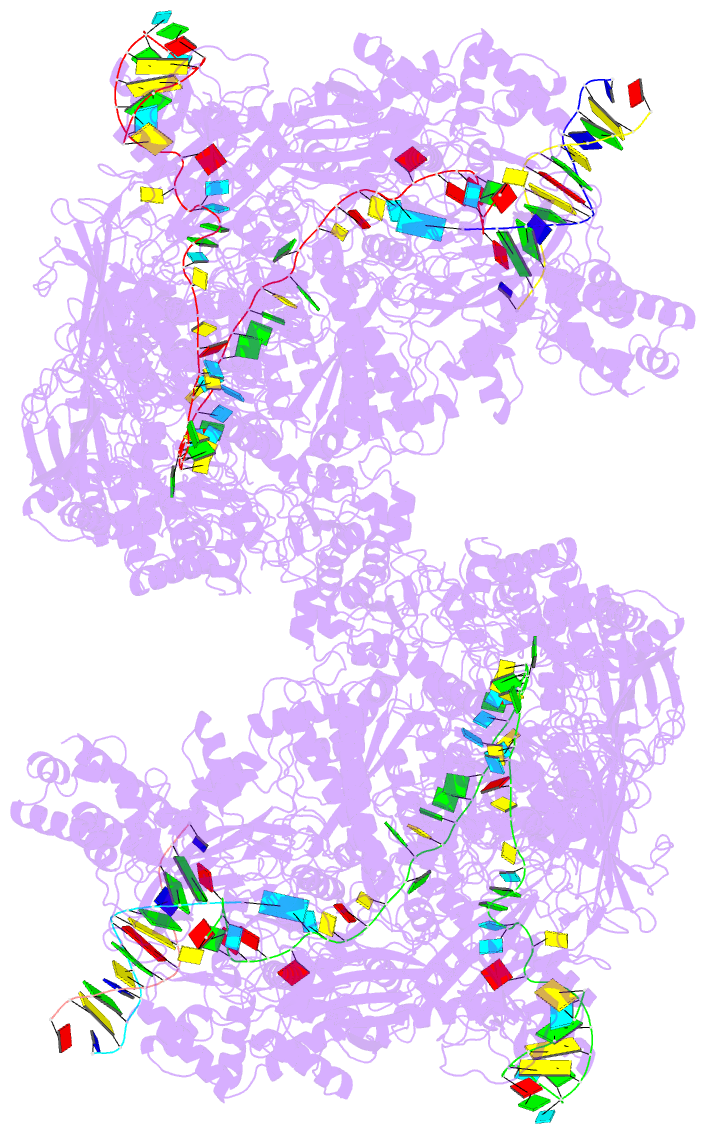Summary information and primary citation
- PDB-id
- 7eln; DSSR-derived features in text and JSON formats
- Class
- immune system-RNA-DNA
- Method
- cryo-EM (3.0 Å)
- Summary
- Structure of csy-acrif24-dsDNA
- Reference
- Yang L, Zhang L, Yin P, Ding H, Xiao Y, Zeng J, Wang W, Zhou H, Wang Q, Zhang Y, Chen Z, Yang M, Feng Y (2022): "Insights into the inhibition of type I-F CRISPR-Cas system by a multifunctional anti-CRISPR protein AcrIF24." Nat Commun, 13, 1931. doi: 10.1038/s41467-022-29581-1.
- Abstract
- CRISPR-Cas systems are prokaryotic adaptive immune systems and phages use anti-CRISPR proteins (Acrs) to counteract these systems. Here, we report the structures of AcrIF24 and its complex with the crRNA-guided surveillance (Csy) complex. The HTH motif of AcrIF24 can bind the Acr promoter region and repress its transcription, suggesting its role as an Aca gene in self-regulation. AcrIF24 forms a homodimer and further induces dimerization of the Csy complex. Apart from blocking the hybridization of target DNA to the crRNA, AcrIF24 also induces the binding of non-sequence-specific dsDNA to the Csy complex, similar to AcrIF9, although this binding seems to play a minor role in AcrIF24 inhibitory capacity. Further structural and biochemical studies of the Csy-AcrIF24-dsDNA complexes and of AcrIF24 mutants reveal that the HTH motif of AcrIF24 and the PAM recognition loop of the Csy complex are structural elements essential for this non-specific dsDNA binding. Moreover, AcrIF24 and AcrIF9 display distinct characteristics in inducing non-specific DNA binding. Together, our findings highlight a multifunctional Acr and suggest potential wide distribution of Acr-induced non-specific DNA binding.





